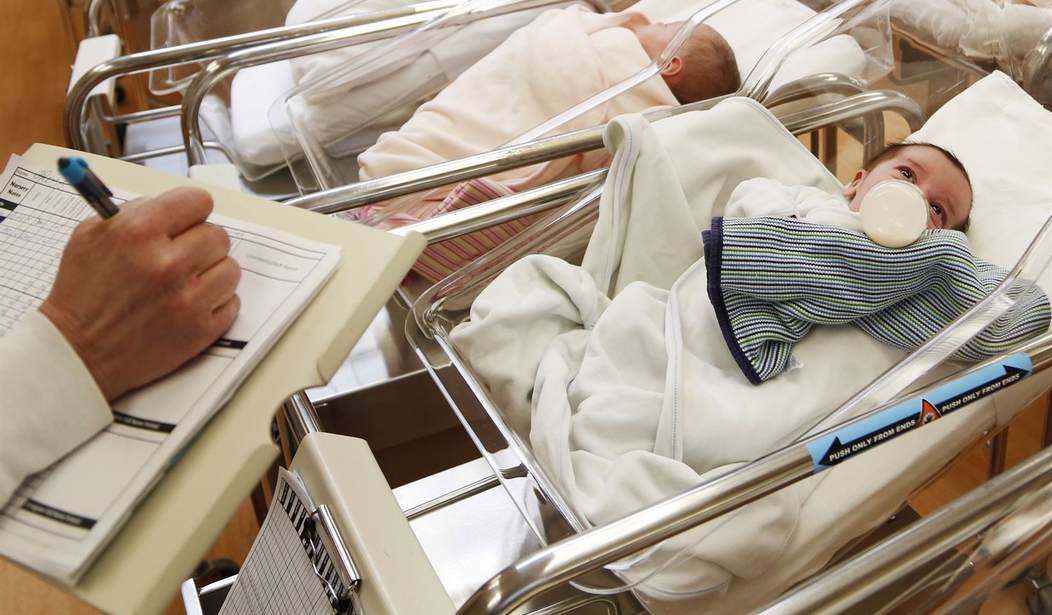We already learned from the last census that the rate of population growth in the United States from 2011 through 2020 was the slowest seen in all but one decade in the nation’s history. (That was during World War 2.) But now that we’re getting some of the numbers tracking these statistics over the course of the pandemic, the next decade is starting off even worse. The Wall Street Journal is reporting this week that the population growth rate in the United States from July 1, 2020, through July 1, 2021, was very close to zero. So close, in fact, that the smidgen of growth that was observed was little more than a rounding error. As a result, the lower end of the currently projected range suggests that it’s still possible that we’ll actually wind up with a lower population at the end of 2021 than when the year began.
America’s weak population growth, already held back by a decadelong fertility slump, is dropping closer to zero because of the Covid-19 pandemic.
In half of all states last year, more people died than were born, up from five states in 2019. Early estimates show the total U.S. population grew 0.35% for the year ended July 1, 2020, the lowest ever documented, and growth is expected to remain near flat this year.
Some demographers cite an outside chance the population could shrink for the first time on record. Population growth is an important influence on the size of the labor market and a country’s fiscal and economic strength.
As usual, there are a variety of factors feeding into this trend. It obviously didn’t help to have more than half a million people drop dead from COVID, but that doesn’t account for nearly all of the shift. The murder rate has gone up significantly in a number of our larger cities, but that’s not really a drop in the bucket even compared to the COVID numbers. So what explains this?
The analysis from the WSJ pins part of the blame on the economy. Hard financial times always produce fewer new family members. The birth rate peaked in 2007 and then plunged during the great recession. But what’s puzzling the analysts studying this data is the fact that the rates never fully rebounded even after we entered a prolonged period of economic prosperity and nearly full employment for at least five years up until the pandemic hit.
The two other biggest drivers are the factors you would expect to see in any supply versus demand scenario. We learned in May that we experienced the largest drop in the American birth rate in 2020 that we’d seen in more than half a century. Part of this was expected and had been predicted. The two general types of pregnancies occurring in couples are the planned and unplanned varieties. (The latter has thankfully been steadily decreasing for decades.) When the economy was shut down and nobody was sure about their future prospects, plenty of couples decided to put having a baby on the back burner until they saw whether or not this was really the end of the world.
In terms of the unplanned pregnancies, when everyone was locked down and having the fear of God instilled in them if they left the house without wearing a mask, if not a full radiation suit, there obviously wasn’t as much dating going on. So fewer women were finding an unpleasant surprise when their time of the month rolled around. When you combine both of those factors together, you’re producing fewer babies. On top of that, fertility rates are dropping across the board, particularly in terms of male sperm counts and motility, so there were fewer births even among those who were trying to conceive.
At the other end of the life cycle, average life expectancy in the United States dropped last year as well, and not just by a little. Life expectancy dropped across all races and both genders. So when you produce fewer babies at the same time that people are dying at a younger age, the result is nothing more than elementary school math. As the WSJ noted, in half of the states in America, more people died than were born.
But this trend will turn around once the pandemic is fully over and everyone is back to work, right? Don’t be too sure. A new study from the Brookings Institution that was just released last moth predicts that the current trends will probably continue for the foreseeable future and may wind up being permanent. And if that’s the case, the only way we continue building our population is through increased immigration. And as you know, that comes with plenty of issues as well.








Join the conversation as a VIP Member